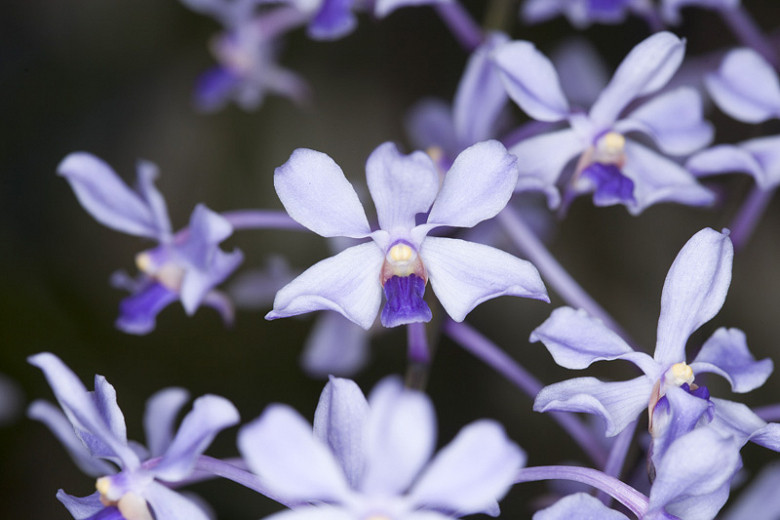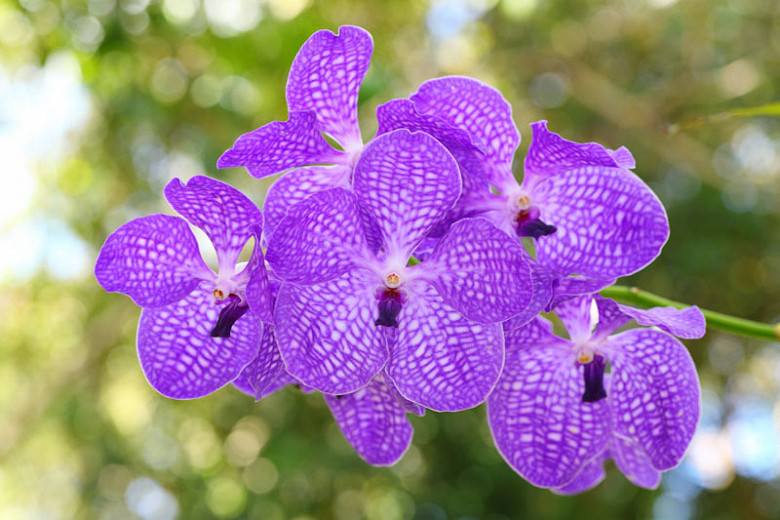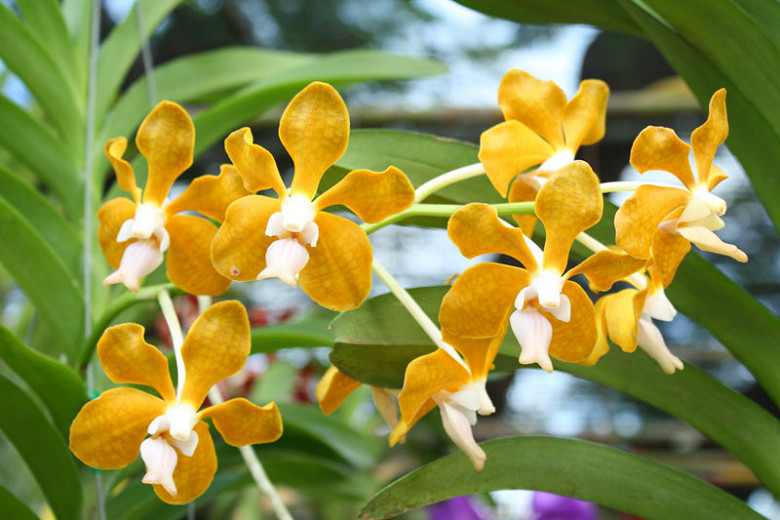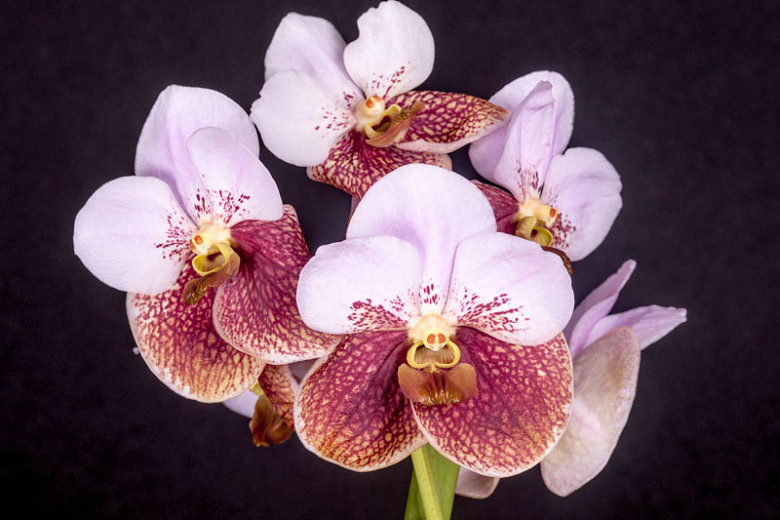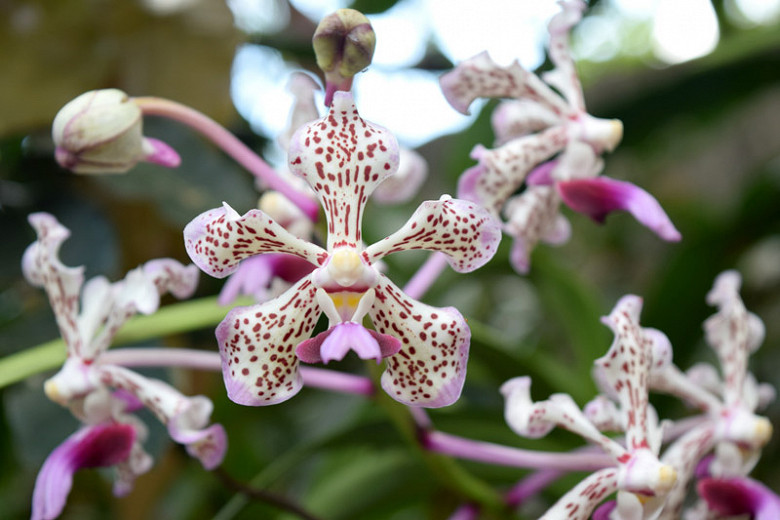Vanda coerulescens (Sky Blue Vanda)
Vanda coerulescens (Sky Blue Vanda) is a small-sized epiphytic orchid species boasting erect or drooping axillary inflorescences giving rise to 15 or more pleasantly scented flowers. Blooming in late winter and spring, the long-lasting blossoms, 1 in. across (2.5 cm), feature white to pale violet-blue sepals and petals, and a purple-blue lip often adorned with white stripes.
Vanda coerulescens (Sky Blue Vanda) is a small-sized epiphytic orchid species boasting erect or drooping axillary inflorescences giving rise to 15 or more pleasantly scented flowers. Blooming in late winter and spring, the long-lasting blossoms, 1 in. across (2.5 cm), feature white to pale violet-blue sepals and petals, and a purple-blue lip often adorned with white stripes. The evergreen leaves, 12 in. (30 cm), are arranged alternately along the stem. They are slightly fleshy, channeled above, and keeled below. Native to China and India, Vanda coerulescens is a hot to cool growing orchid species found on tree trunks in open woodland at elevations of 1000-5300 ft. (300-1600 m).
- Grows up to 24 in. tall (60 cm).
- Grows best when exposed to very bright light with some partial shade, especially at midday in summer. Provide good ventilation. The leaves should be medium green, not dark green. Dark green leaves indicate not enough light.
- Optimum temperatures are 60-70°F (15-21°C) at night and a maximum of 95°F (35°C) during the day.
- Maintain adequate humidity (80%) by setting the plant on a tray of gravel, partially filled with water, so that the pot never sits in the water.
- Water heavily during the active growth period, making sure the roots always dry quickly after watering. Water sparingly in the winter or during cloudy weather.
- Fertilize with a balanced (such as 20-20-20) fertilizer applied full strength once a week during warm weather or use a one-quarter-strength solution at every watering. During cool or cloudy weather, apply fertilizer once every 2-4 weeks. Use a high-phosphorus fertilizer (such as 10-30-20) every third application to promote flowering.
- Propagate by division when the plant overflows the pot.
- Once the flowers have faded, remove the spent flower spikes.
- Potting is necessary when the rhizome of the plant protrudes over the edge of the pot or the potting medium starts to break down. This should be done in the spring. Use a coarse medium, whether fir bar, tree fern, or charcoal, and work it around the roots. Keep shaded, humid, but drier at the roots until new root tips grow. Do not overpot.
- Generally disease free. Keep an eye out for aphids, glasshouse red spider mites and mealybugs.
- Native to India, eastern Himalayas, Yunnan China, Myanmar, and Thailand.
Tip for reblooming
- Vanda orchids should bloom at least once a year. If your orchid does not flower, move it to a location where it will receive more light and sun. This may resolve the problem.
Requirements
| Hardiness | 12 – 13 |
|---|---|
| Plant Type | Orchids |
| Plant Family | Vanda – Orchids |
| Exposure | Partial Sun |
| Season of Interest | Spring (Early,Mid)Winter |
| Height | 1' – 2' (30cm – 60cm) |
| Water Needs | Average |
| Maintenance | Average |
| Soil Drainage | Well-Drained |
| Characteristics | Fragrant, Showy, Evergreen |
| Garden Uses | Patio and Containers |
